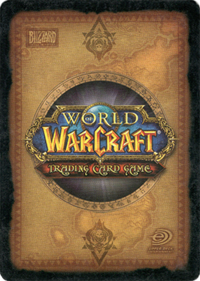
In collectible card games, digital collectible card games and collectible miniature wargames, a booster pack is a sealed package of cards or figurines, designed to add to a player's collection. A box of multiple booster packs is referred to as a booster box.

The Lord of the Rings Trading Card Game is an out-of-print collectible card game produced by Decipher, Inc. Released November 2001, it is based on Peter Jackson's The Lord of the Rings film trilogy and the J. R. R. Tolkien novel on which the films were based. Decipher also had the rights to The Hobbit novel but did not release any cards based on it. In addition to images taken from the films, in 2004 Weta Workshop produced artwork depicting characters and items from the novel absent from the films for use on cards. In 2002, LOTR TCG won the Origins Awards for Best Trading Card Game of 2001 and Best Graphic Presentation of a Card Game 2001. Decipher's license to The Lord of the Rings expired on July 30, 2007, after which all official promotion and distribution of the game stopped.

The Pokémon Trading Card Game, abbreviated as PTCG or Pokémon TCG, is a collectible card game developed by Creatures Inc. based on the Pokémon franchise. As of March 2023, the game has produced over 52.9 billion cards worldwide.
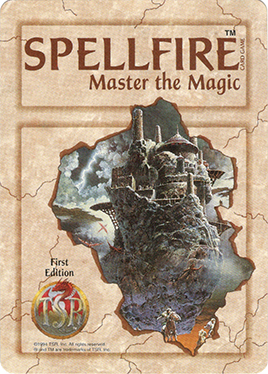
Spellfire: Master the Magic is an out-of-print collectible card game (CCG) created by TSR, Inc. and based on their popular Dungeons & Dragons role playing game. The game appeared first in April 1994, shortly after the introduction of Magic: The Gathering, in the wake of the success enjoyed by trading card games. It was the second CCG to be released, preceding Wizards of the Coast's second CCG Jyhad by two months. More than one dozen expansions for the game were released, and the final expansion was released in October 1997.
Released in 2003 by Decipher, Inc. the Beyblade Trading Card Game is an out-of-print collectible card game based on the Beyblade anime series. It was designed to be simplistic in nature with a slow learning curve. In one format of the game, players did not even need to know how to read. Only one set was released.

The Harry Potter Trading Card Game is an out-of-print collectible card game based in the world of J. K. Rowling's Harry Potter novels. Created by Wizards of the Coast in August 2001, the game was designed to compete with the Yu-Gi-Oh!, Pokémon and Magic: The Gathering card games. Its release was timed to coincide with the theatrical premiere of the first film in the series. The game was praised for the way it immersed children in the Harry Potter universe. At one point the game was the second best selling toy in the United States; however, it is now out of print.

Dragon Ball Z Trading Card Game is an out-of-print trading card game based on the Dragon Ball series created by Akira Toriyama. The game was produced by Score Entertainment and uses screen captures of the anime to attempt to recreate the famous events and battles seen in the anime. Score then sold the rights to Panini which eventually ceased publishing.

The Pirates of the Caribbean Trading Card Game is an out-of-print collectible card game based on the two Disney films Pirates of the Caribbean: The Curse of the Black Pearl and Pirates of the Caribbean: Dead Man's Chest. Upper Deck Entertainment launched this title in June 2006 to roughly correspond to the release of the second film but canceled due to lack of interest.

Play! Pokémon, formerly known as Pokémon Organized Play, is a division of The Pokémon Company International established in 2003 and known for hosting the Pokémon World Championships, a competitive eSports tournament which features the Pokémon Trading Card Game (TCG), Pokemon Go, the Pokémon Video Game Championships (VGC), and the Pokkén Tournament Championships. It is the official governing body of the competitive tournament circuit for Pokémon, as well as the organizer of a variety of programs for casual players of the game.

The Bleach Trading Card Game is an out-of-print collectible card game from Score Entertainment, and is based on the manga and anime series of the same name. The game received a nomination for Origin's "Game of the Year" and earned a semi-finalist position.
World of Warcraft, or WoW, is set in a fictional universe, its primary setting being the planet of Azeroth. The first expansion, The Burning Crusade, introduced a second planet, Outland. Wrath of the Lich King and Cataclysm expanded upon Azeroth and respectively added Northrend, the frigid northern continent of Azeroth, and drastically changed various other continents by destroying some and unveiling new ones. The next expansion, Mists of Pandaria, added Pandaria, the southern continent previously hidden behind a perennial mist cover. Warlords of Draenor introduced the planet of Draenor, a version of Outland in a different timeline before its partial destruction. The Legion expansion took adventurers to the Broken Isles, an island chain near the Maelstrom in the middle of the Great Sea, and the damaged planet Argus, the headquarters of the Burning Legion. The seventh expansion, Battle for Azeroth, added two new island continents to the center of Azeroth: Kul Tiras and Zandalar. The latest expansion, Shadowlands, introduced the eponymous Shadowlands, a realm composed of five major zones: Bastion, Maldraxxus, Ardenweald, Revendreth, and the Maw.

The Dragon Ball Collectible Card Game is a collectible card game based on the Dragon Ball franchise, first published by Bandai on July 18, 2008.
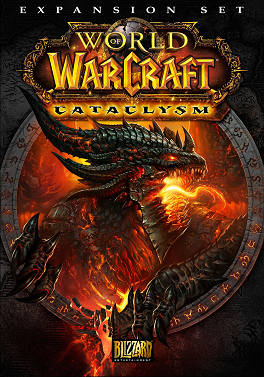
World of Warcraft: Cataclysm is the third expansion set for the massively multiplayer online role-playing game (MMORPG) World of Warcraft, following Wrath of the Lich King. It was officially announced at BlizzCon on August 21, 2009, although dataminers and researchers discovered details before it was announced by Blizzard. The expansion was released on December 7, 2010.
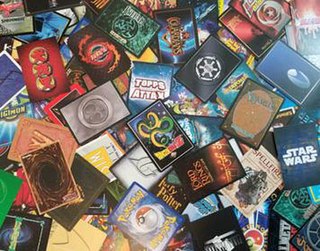
A collectible card game (CCG), also called a trading card game (TCG) among other names, is a type of card game that mixes strategic deck building elements with features of trading cards. It was introduced with Magic: The Gathering in 1993.
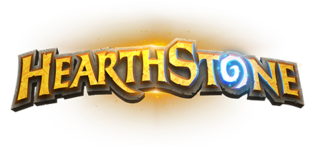
Hearthstone is a free-to-play online digital collectible card game developed and published by Blizzard Entertainment. Originally subtitled Heroes of Warcraft, Hearthstone builds upon the existing lore of the Warcraft series by using the same elements, characters, and relics. It was first released for Windows and macOS in March 2014, with ports for iOS and Android released later that year. The game features cross-platform play, allowing players on any supported device to compete with one another, restricted only by geographical region account limits.
A sideboard, side deck, or side is a set of cards in a collectible card game that are separate from a player's primary deck. It is used to customize a match strategy against an opponent by enabling a player to change the composition of the playing deck.

Shadow Era is a free online digital collectible card game created by Vietnamese developer Wulven Studios. Cross platform gameplay is central to the digital version's design and it is supported on PC, Mac, iOS, and Android. A physical version has also been released.

Hearthstone is a digital collectible card game released by Blizzard Entertainment in 2014, available for Microsoft Windows and macOS PCs and iOS and Android smartphones. The game is free-to-play, with players gaining in-game currency and card packs via winning matches and completing quests, while real-world money can be spent to acquire additional card packs and cosmetic items. The game has been critically well-received and financially successful, estimated in August 2017 to earn nearly US$40 million per month. As of November 2018, Blizzard has reported more than 100 million Hearthstone players. Blizzard has continued to expand the game with the addition of multiple expansions, adventures and game modes.

Force of Will (フォースオブウィル) is a trading card game. It was originally released in Japan in December 2012 by Force of Will Co., Ltd. and later released to English speaking countries in 2013. Since 2019, the game has been developed by TCG Co., Ltd. and released by Eye Spy Productions. It has game mechanics similar to Magic: The Gathering. The game has a tournament circuit called Grand Prix.

The Final Fantasy Trading Card Game, often abbreviated as Final Fantasy TCG or FF-TCG, is a trading card game developed by Hobby Japan and published by Square Enix. The first iteration was released in Japan in 2011 but never released outside Japan and was discontinued in order to release a second iteration worldwide in October 2016.
